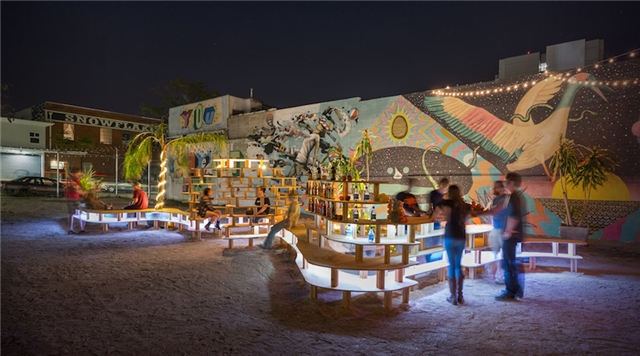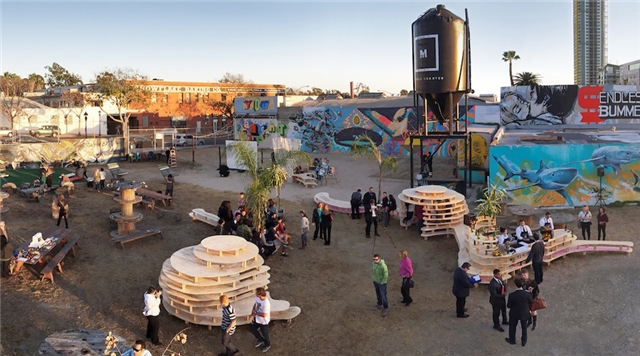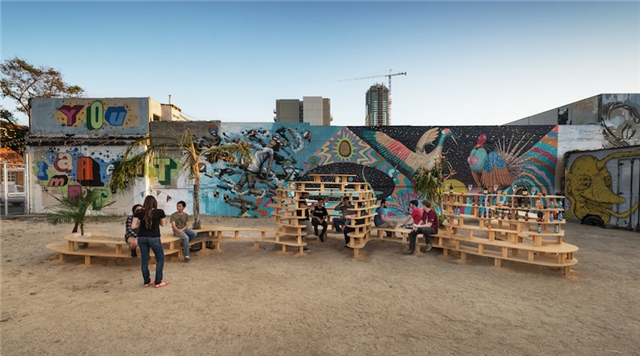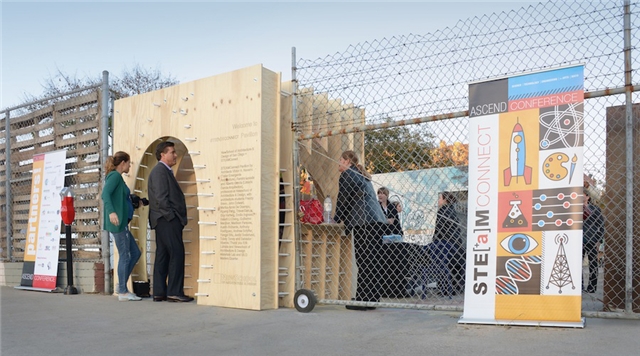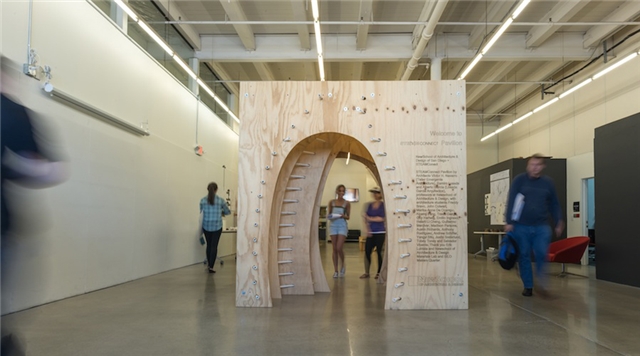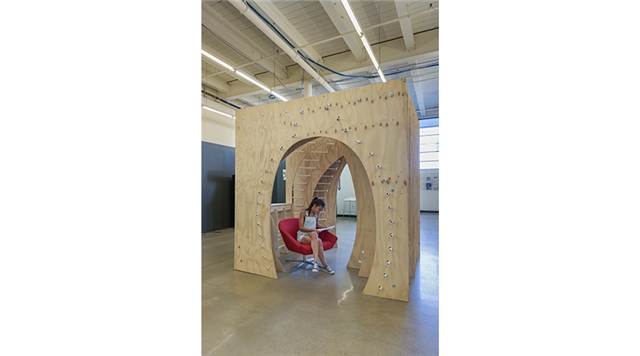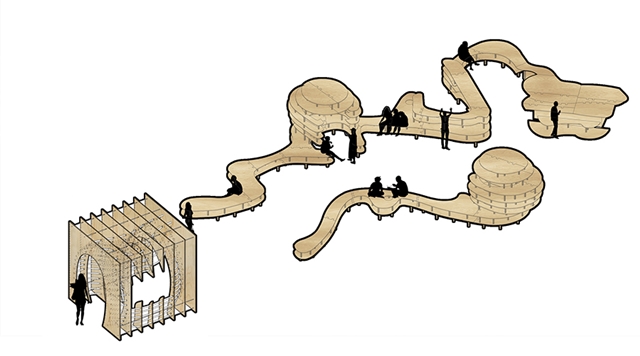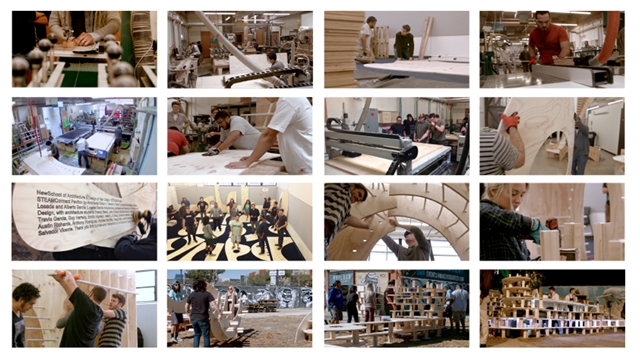If Higher Education stimulates and holds critical thought and has the best professionals and academicians to teach each topic, then why doesn’t the private sector work with Universities as a client? Would a private company look to a School of Architecture for design services and ideas?
These were the questions and thoughts that were discussed among LG Architects (Ramiro Losada & Alberto Garcia) who teamed up with Taller Emergente Architecture (Victor H. Navarro) when STEAMConnect approached them with their design challenge.
The STEAM Pavilion idea originated from the necessity to accommodate the activities that take place at the annual conferences of STEAMConnect. These activities involve talking, sitting, eating and, above all, meeting. We found that Architecture is a clear combination of Science, Technology, Engineering, Math and Art, so addressing the necessities of the STEAMConnect annual reception would be the perfect example of STEM + Art disciplines coming together, blending creativity, design and technical skills.
We, therefore engaged with NewSchool of Architecture & Design and opened the opportunity to create a special student workshop.
If we understand the value of knowledge as a main factor for the growth of new societies, then we should also consider that the relationship between universities and enterprises play an essential role in their development. Nowadays, universities have a key responsibility towards process, research and investigation, which reach a level of innovative ideas that are beyond the capabilities of enterprises. Universities have been recognized by our system to not only foster knowledge, but also with the responsibility to transmit that knowledge to society. Additionally, this commission came from an organization that is related to education and, for this reason, we found that the design and construction should come from architecture students that would best exercise an integrated process related to STEAM. Architecture is a the perfect example to place into practice the five disciplines that are promoted by STEAMConnect.
With a 4–week schedule and a budget of only $3500 to design and build this project, we took it upon ourselves to find the most efficient resources to accomplish our design goals. We enlisted 16 students, designed the pavilions in one week, purchased and cut the materials during the second week, and constructed, assembled and transported the structures during the last two weeks before the event.
It was decided early on that a design/build method utilizing digital fabrication should be the process implemented. Since the budget allowed the purchase of 60 sheets of radiata plywood (4’x8’), the use of the CNC router machine at Newschool’s MaterialsLab was the clear and logical method of construction. The 16 students were divided into groups of four, where each group was assigned to study the site and propose different methods to maximize the effective use of the materials available in order to achieve and resolve the design goal. Once the design options had been studied, we decided on a final solution that included a ticket booth, pod meeting spaces, a bar, a stage and general seating areas.
During the STEAMConnect reception, the pavilions were a success in providing informal Meeting Spaces, networking, supporting artistic performances and creating an atmosphere.
SILO hosts several events every year in San Diego. The STEAM Pavilion will continue its functions there as meeting spaces, providing places to talk, sit, eat and meet at Makers Quarter, San Diego.



